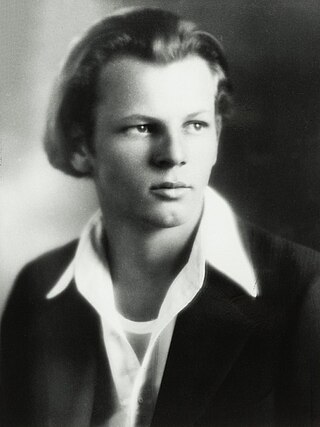
Paul Jackson Pollock was an American painter. A major figure in the abstract expressionist movement, Pollock was widely noticed for his "drip technique" of pouring or splashing liquid household paint onto a horizontal surface, enabling him to view and paint his canvases from all angles. It was called all-over painting and action painting, since he covered the entire canvas and used the force of his whole body to paint, often in a frenetic dancing style. This extreme form of abstraction divided the critics: some praised the immediacy of the creation, while others derided the random effects.

Lenore "Lee" Krasner was an American painter and visual artist active primarily in New York whose work has been associated with the Abstract Expressionist movement. She received her early academic training at the Women's Art School of Cooper Union, and the National Academy of Design from 1928 to 1932. Krasner's exposure to Post-Impressionism at the newly opened Museum of Modern Art in 1929 led to a sustained interest in modern art. In 1937, she enrolled in classes taught by Hans Hofmann, which led her to integrate influences of Cubism into her paintings. During the Great Depression, Krasner joined the Works Progress Administration's Federal Art Project, transitioning to war propaganda artworks during the War Services era.

Amy Sillman is a New York-based visual artist, known for process-based paintings that move between abstraction and figuration, and engage nontraditional media including animation, zines and installation. Her work draws upon art historical tropes, particularly postwar American gestural painting, as both influences and foils; she engages feminist critiques of the discourses of mastery, genius and power in order to introduce qualities such as humor, awkwardness, self-deprecation, affect and doubt into her practice. Profiles in The New York Times, ARTnews, Frieze, and Interview, characterize Sillman as championing "the relevance of painting" and "a reinvigorated mode of abstraction reclaiming the potency of active brushwork and visible gestures." Critic Phyllis Tuchman described Sillman as "an inventive abstractionist" whose "messy, multivalent, lively" art "reframes long-held notions regarding the look and emotional character of abstraction."
Kysa Johnson is a contemporary artist whose drawings, paintings, and installations explore patterns in nature that exist at the extremes of scale. Using the shapes of subatomic decay patterns, maps of the universe, or the molecular structure of pollutants or of diseases and cures – in short, microscopic or macroscopic “landscapes” – Johnson's work depicts a physical reality that is invisible to the naked eye. Often these micro patterns are built up to form compositions that relate to them conceptually.. Johnson graduated with honors from the Glasgow School of Art in Glasgow, Scotland. She has exhibited at, among other venues, The Aldrich Museum of Contemporary Art, The Tang Museum, The DeCordova Museum, Dublin Contemporary, The Nicolaysen Museum, The Katonah Museum of Art, The Hudson River Museum, The 2nd Biennial of the Canary Islands, The National Academy of Science, Morgan Lehman Gallery, Von Lintel Gallery, and Halsey McKay. Her work has been written about extensively in publications including Artforum, The New York Times, Interview Magazine, and The San Francisco Chronicle. Her work is included in many public collections including MIT, Microsoft, The Progressive Collection, Deutsche Bank, and Credit Suisse. She is a NYFA fellow (2003) and Pollock Krasner Grant recipient (2010).

Diana al-Hadid is a Syrian-born American contemporary artist who creates sculptures, installations, and drawings using various media. She lives and works in Brooklyn, New York. She is represented by Kasmin Gallery.

Katy Schimert is an American artist known for exhibitions and installations that meld disparate media into cohesive formal and conceptual visual statements arising out of personal experience, myth and empirical knowledge. She interweaves elements of fine and decorative arts, figuration and abstraction in densely layered drawings and sculpture that together suggest elliptical narratives or unfolding, cosmic events. Curator Heidi Zuckerman wrote that Schimert is inspired by "the places where the organized and the chaotic intersect—the scientific and the mythic, the known and the unknown, and the real and the imagined … she creates work that exists where, through fantasy, truth and beauty meet."
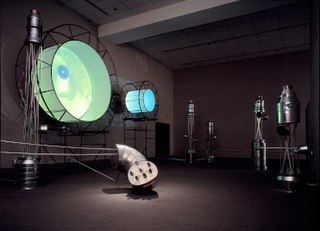
Margaret Cogswell is a mixed-media installation artist and sculptor based in New York. She emerged in late 1980s as a sculptor, gaining attention for abstract constructions exploring tensions between natural and human-made materials, roughness and sophistication. Since 2003, Cogswell's work has focused on a series of site-specific installations called "River Fugues": individually unique, multimedia projects involving detailed geographical, historical and social research that explore the intertwining of rivers, industry, people's lives, and the increasingly politicized role of water. The series' title invokes the contrapuntal musical form of the fugue to indicate the weaving of disparate voices, layers and media into a harmonious, composite whole. Critic Lilly Wei described the "River Fugues" as a hybrid form based on musical composition that "expresses the complex beauty of rivers … and sounds an alarm over the sweeping environmental changes that have endangered our natural resources."

Nancy Davidson is an American artist best known for large-scale inflatable sculptures regarded as hyper-feminized abstractions of the human female form. Bulbous and flesh-like, the sculptures resemble buttocks and breasts and employ erotic cultural signifiers in their shape and decoration. Davidson's work spans art media but centers around sculpture. It is largely post-minimal in character and described by commentators as providing a feminist counterpoint to the male-dominated, minimalist sculpture of the 1960s, as well as to cultural tropes involving bodies that the works themselves invoke. Of particular note are Davidson's use of humor and a sense of absurdity to seemingly both celebrate and subvert these tropes, inviting their investigation but without the seriousness and moralism that often accompany critical works. Sculpture Magazine critic Robert Raczka wrote that "The confectionary color and oversize scale" of Davidson's sculpture creates a "playfully upbeat mood that allows feminist and gender issues to rise to the surface at irregular intervals, without didacticism." The New Art Examiner's Susan Canning described it as establishing "a context where all can revel in the transgressive and liberating power of the grotesque."

Polly E. Apfelbaum is an American contemporary visual artist, who is primarily known for her colorful drawings, sculptures, and fabric floor pieces, which she refers to as "fallen paintings". She currently lives and works in New York City, New York.
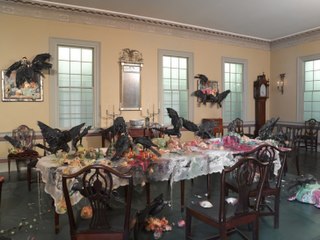
Valerie Hegarty is an American painter, sculptor, and installation artist. She is known for irreverent, often critical works that replicate canonical paintings, furnishings, and architectural spaces from American or personal history undergoing various processes of transformation. Hegarty most often portrays her recreations in meticulously realized, trompe l’oeil states of decay, ruin, or physical attack related to their circumstances. Her work examines American historical themes involving colonization, slavery, Manifest Destiny, nationalism, art-historical movements and their ideological tenets, romantic conceptions of nature, and environmental degradation. Sculpture critic Robin Reisenfeld wrote that among other things, Hegarty's art is "informed by 19th-century American landscape painting as an expression of the sublime, as well as by the manufacturing of two-dimensional 'masterworks' to be destroyed in three-dimensional fashion in order to evoke entropic forces of growth and decay."

Candida Alvarez is an American artist and professor, known for her paintings and drawings.
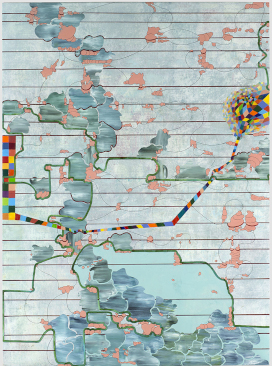
Lisa Corinne Davis is an American visual artist known for abstract paintings and works on paper that suggest maps and other encoded forms of knowledge. She employs abstraction as a means of rendering the complexities of contemporary experience—including her own as an African-American woman—often questioning preconceived notions about identity, classification, and rationality versus subjectivity. Her densely layered, colorful work merges contrasting schemas, visual elements and formal languages, blurring distinctions between figuration and abstraction, real and fictive spaces and concepts, and microcosmic or macrocosmic reference. Brooklyn Rail critic Joan Waltemath wrote, "The urban experiences of space and time that Davis presents are subtle distillations of moment and coincidence ... Her attempt to map the shattered terrain of contemporary life points both to an awareness of other times and a belief in navigating the present one."
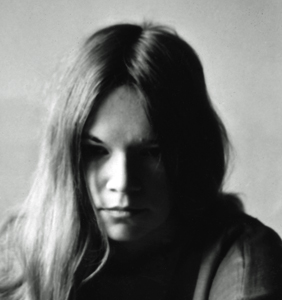
Rosemary Mayer (1943–2014) was an American visual artist who was closely associated with the feminist art movement and the conceptual art movement of the 1970s. She was a founding member of A.I.R. gallery, the first all-female artists cooperative gallery in the United States.
Morgan O'Hara, is a conceptual artist based in Venice who works in performative drawing and social practice.
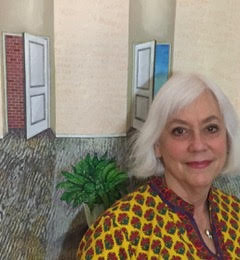
Robin Tewes is a Queens-born, New York City-based artist, known since the early 1980s for her representational paintings of frozen, narrative-like moments. She has shown her work in numerous solo exhibitions in New York City, as well as nationally and internationally, and exhibited at venues including P.S. 1, the Museum of Modern Art, the Whitney Museum, The Drawing Center, and the Central Academy of Fine Arts (Beijing), among many. Her work has been widely discussed in publications including Artforum, Art in America, ARTnews, Tema Celeste, the New York Times, the Los Angeles Times, and the Village Voice. Tewes was a founding member of the P.S. 122 Painting Association. She has been recognized with a Pollock-Krasner Foundation Fellowship (2015) and Painting Award (2008), an Adolph and Esther Gottlieb Foundation Award (2007), and inclusion in the Smithsonian Archives of American Art in 2016.

Priscila De Carvalho is a Brazilian-born American contemporary artist who is known for paintings, sculptures, murals, site-specific art installations, and permanent public art.
Anna Conway is an American visual artist based in New York City and known for enigmatic oil paintings that depict uneasy, absurdist moments descending on isolated, ordinary individuals. She combines a style identified as precise and methodical with detailed observation, "an air of surrealist suspension," and a narrative sense that critics characterize as elusive, metaphysical and "imbued with cinematic suggestion." Conway has exhibited nationally and internationally, including at MoMA PS1, the American Academy of Arts and Letters, Kemper Museum of Contemporary Art, University Art Museum at Albany, Fralin Museum of Art, and Collezione Maramotti (Italy), among other venues. She has been recognized with a Guggenheim Fellowship (2014), two Pollock-Krasner Foundation Awards, and the American Academy of Arts and Letters William L. Metcalf Award (2008).

Elana Herzog is an American installation artist and sculptor based in New York City. She is most known for abstract, tactile works in which she disassembles, reconfigures and embeds second-hand textiles in walls, modular panels and architectural spaces with industrial-grade metal staples. Herzog has been recognized with a Guggenheim Fellowship, Anonymous Was a Woman Award and Louis Comfort Tiffany Foundation Award, among others. She has exhibited nationally and internationally, including at the Brooklyn Museum, Museum of Arts and Design (MAD), Tang Museum, Weatherspoon Art Museum, Sharjah Art Museum, and Reykjavik Art Museum.

Heide Fasnacht is a New York City-based artist who works in sculpture, drawing, painting and installation art. Her work explores states of flux, instability and transformation caused by human action and natural events. Since the mid-1990s, she has been known for sculptures and drawings that recreate momentary phenomena such as sneezes, geysers and demolitions—in sometimes abstract or cartoony form—that are temporally and spatially "frozen" for consideration of their aesthetic, perceptual, social or sensate qualities. In the late 2010s, she has expanded these themes in paintings that examine lost and neglected childhood sites, such as playgrounds and amusement parks. ARTnews critic Ken Shulman has described her work as "chart[ing] the fluid dialogue between second and third dimensions, motion and inertia, creation and ruin."

Serena Bocchino is an American contemporary abstract artist working primarily in the realm of painting. Her highly expressionistic style shows a variety of influences from Abstract Expressionism and dance, to Fluxus and jazz music. Like her varied influences, her process is highly improvisational yet technically informed – consisting of language created through an intermingled vocabulary of color, media and technique.





















